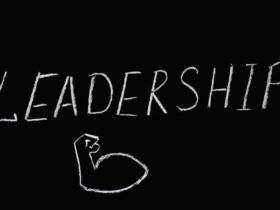Communication is a fundamental aspect of human interaction. The effectiveness of communication can greatly influence outcomes in various areas of life, including personal relationships, business, and academia. One often overlooked but crucial component of effective communication is the use of contextualizing statements. These statements help shape the recipient’s understanding of the information being conveyed. They set the stage for dialogue, provide clarity, and guide the flow of discussion. This article will delve into the intricacies of contextualizing statements, their importance, and how to effectively use them in various scenarios.
Understanding What is the Contextualizing Statement
A contextualizing statement is a preliminary statement used to set the scene for a conversation, narrative, argument, or any piece of information being communicated. This could be likened to a road map, offering direction and clarity on the discussion path. By using a contextualizing statement, we present the context in which the following information should be understood, ensuring the recipient has a clear understanding of the purpose and background of the conversation.
Contextualizing statements can take many forms, depending on the scenario. In an academic setting, a lecturer may start a new topic by linking it to previously taught concepts, ensuring students understand the context of the new information. In a business meeting, a manager might preface a discussion about a new project by outlining the company’s current status and the rationale for the project.
For instance, consider a situation where a manager wants to introduce a new marketing strategy to their team. An effective contextualizing statement might be: “Considering the recent decline in our sales and the rise of digital platforms, we need to reconsider our marketing strategy.” This statement provides the context — the decline in sales and the rise of digital platforms, and sets the scene for the discussion about the new marketing strategy.

The Importance of Contextualizing Statements
Contextualizing statements play a pivotal role in providing clarity and direction in conversations. They serve as the guiding light, ensuring all participants are on the same page, preventing misunderstandings, and facilitating meaningful and productive discussions.
When a conversation lacks proper contextualization, it can lead to confusion, misunderstanding, and inefficiency. For example, in a team meeting, if a leader dives straight into discussing a solution without contextualizing the problem it addresses, team members may not understand its significance or applicability. This can lead to ineffective problem-solving and wasted resources.
There are numerous scenarios where contextualizing statements prove crucial. In academic discussions, they help students understand the significance of a concept within a broader subject area. In business communication, they guide strategic decision-making by clarifying the current situation and outlining the goals. In daily conversations, they help avoid misunderstandings by defining the subject and purpose of the conversation.

Contextualizing Statements in Different Scenarios
Academic Discussions: In an academic setting, contextualizing statements are indispensable. Professors often use them to connect new material to previously learned concepts. For example, a history professor might say, “Now that we’ve explored the causes of World War I, let’s consider its impacts on the political landscape of Europe.” This statement links the new topic — the impacts of the war, to a familiar concept — the causes of the war, providing students with a clear understanding of the context.
Business Communication: In business, contextualizing statements guide strategy discussions, problem-solving sessions, and decision-making processes. For instance, during a financial meeting, a CFO might say, “Given the current market volatility and our company’s financial goals, let’s examine our investment strategies.” This statement sets the stage for the discussion by outlining the current situation (market volatility) and the goal (company’s financial goals).
Daily Conversations: In everyday discussions, contextualizing statements can help clarify intentions and promote understanding. For example, a person might preface a difficult conversation with a statement like, “I value our friendship, and because of that, I think it’s important we address a situation that’s been bothering me.” Here, the contextualizing statement establishes the conversation’s purpose and signals the need for an open, honest dialogue.

How to Craft Effective Contextualizing Statements
Creating powerful contextualizing statements involves understanding the situation, identifying the purpose of the conversation, and articulating these elements clearly. Here are some tips to craft effective contextualizing statements:
- Identify the Purpose: Understand the purpose of your communication. Are you introducing a new idea, solving a problem, or making a decision? This will guide the crafting of your statement.
- Understand the Audience: Tailor your contextualizing statement to your audience’s knowledge and interests. What do they already know, and what do they need to know to understand the context?
- Be Clear and Concise: Clarity is key. Avoid ambiguity and ensure your statement succinctly conveys the context.
- Link to Relevant Information: Connect your statement to relevant background information or previously discussed topics. This helps provide a holistic understanding of the context.
- Set the Expectations: If appropriate, indicate what you expect from the conversation. This guides the recipient’s response and participation.
Conclusion
Mastering the art of crafting effective contextualizing statements is a crucial aspect of enhancing communication. Whether in academic settings, business scenarios, or daily conversations, these powerful tools set the stage for meaningful dialogue, foster understanding, and guide productive discussions. By understanding the function of contextualizing statements and employing the techniques discussed, one can significantly improve their communication skills and outcomes.
References
- Adler, R. B., & Proctor, R. F. (2014). Looking Out, Looking In. 14th Ed. Wadsworth Cengage Learning.
- Berko, R., Wolvin, A., & Wolvin, D. (2010). Communicating: A social, career, and cultural focus. Boston: Allyn & Bacon.
- Gudykunst, W. B. (2004). Bridging Differences: Effective Intergroup Communication. 4th Ed. Sage Publications.
- Hall, E. T. (1976). Beyond Culture. Anchor Press.
- LeBaron, M. (2003). Bridging Cultural Conflicts: A New Approach for a Changing World. Jossey-Bass.
- Smith, P. K., & Mackie, D. M. (2007). Social Psychology. Psychology Press.

















